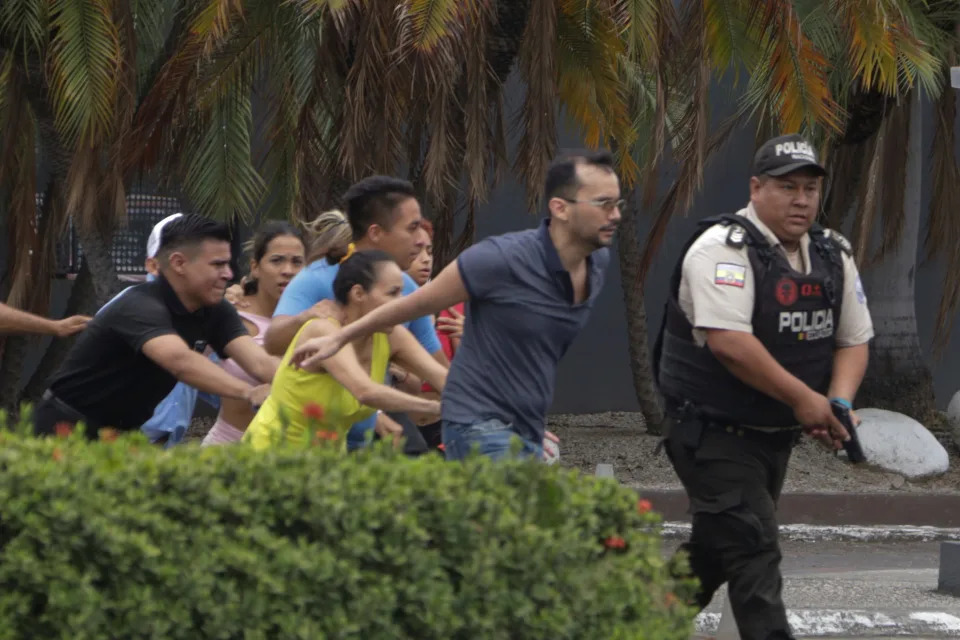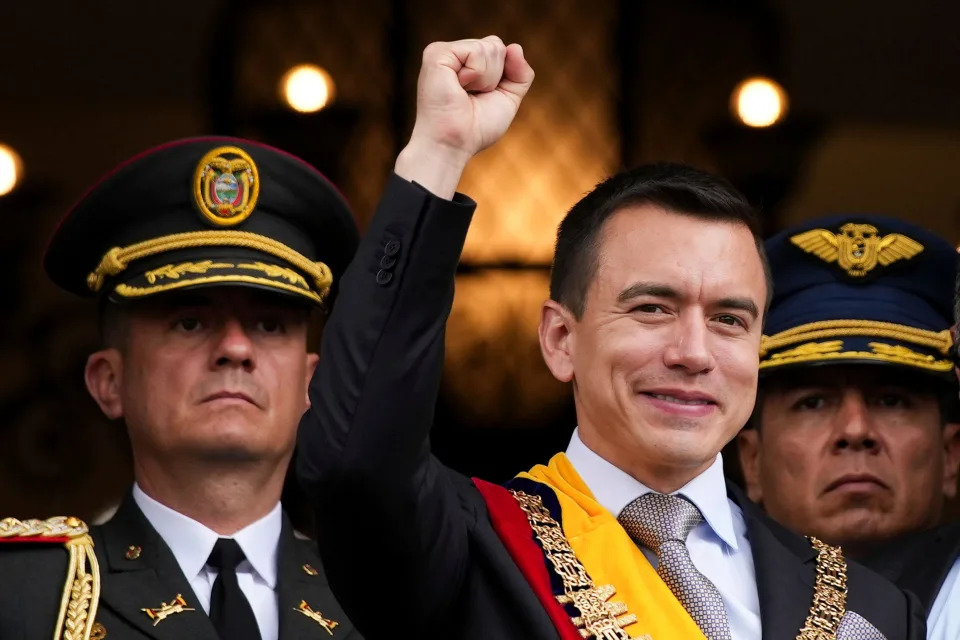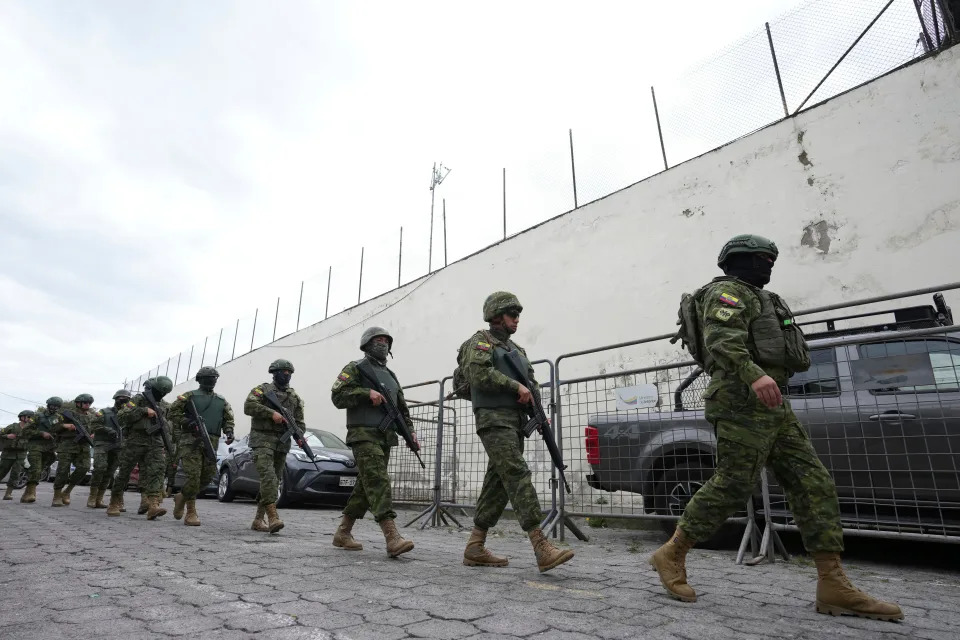People across the U.S. and world saw shocking video of more than a dozen armed, masked men storming an Ecuadorian television station during a live broadcast last month.
The crime was linked to a prison escape of a local gang leader, but there is a more familiar villain behind the scenes: Mexican drug cartels.
“We are on air, so they know that you cannot play with the mafia,” one of the hooded men was heard saying during the assault at the Guayaquil station on Jan. 9.
Ecuador is no stranger to powerful gangs fighting for territory while also fighting the state. But in recent years, the infiltration of Mexican drug cartels into the local criminal gangs has marked the beginning of a new era of violence in the small South American country.

There’s a central reason behind the cartels’ interest: Ecuador is a primary drug distribution point to the rest of the world. And its main product, cocaine from its neighbors Colombia and Peru, often ends up in the U.S. and Europe.
Following the recent unrest, new President Daniel Noboa declared an “internal armed conflict” and ordered national security forces to neutralize 22 armed groups classified as “terrorists.”
The U.S. government issued a statement following the violent events condemning the attacks: “We reaffirm our commitment to a close partnership with Ecuador, including in the fight against criminal organizations.”

Car bombs, prison riots, an increase in murders, threats to the media, weapons and explosives are part of the current narrative of violence in the country, but it’s a slate already well known in Mexico.
Local gangs join with Mexico’s two biggest cartels
The prison escape of two prominent Ecuadorian gang leaders triggered the recent escalation of violence and led Noboa to declare a national state of emergency.
The leader of Los Choneros, Adolfo Macías Villamar, better known as “Fito,” escaped prison prior to being transferred to a smaller and more secure location, the police said.
He was serving a sentence of 34 years for organized crime, drug trafficking and homicide.
When the news of his escape spread, riots occurred in multiple prisons and corrections officers were taken hostage.

Massacres and riots are getting more common in Ecuador because of the ongoing turf wars between drug traffickers. In July, a riot left 31 inmates dead, authorities said.
Los Lobos, the second primary criminal gang in Ecuador with more than 8,000 members, according to Insight Crime, began as a dissident of the Choneros. Its leader, Fabricio Colón Pico, aka “Capitán Pico,” also escaped prison in early January.
Both the Choneros and Lobos, among other criminal gangs, are fighting to control the cocaine routes in the country. Experts say they have existed for a long time but evolved since Mexican cartels allied with them.
“In Ecuador, these groups have existed for decades, but with the arrival of the Mexican cartels, such as the Sinaloa Cartel and the Jalisco New Generation Cartel (CJNG), they made local alliances, and in this way, they became their operating arms for drug trafficking,” security analyst David Saucedo said.
The two Mexican super-cartels are fierce rivals.
Saucedo said the cartels provide resources, drugs, weapons and personnel.
“Cartels have funded the small Ecuadorian mafias when they were practically insignificant. They were actually gangs, but over time, they evolved and became mini cartels,” he said.


